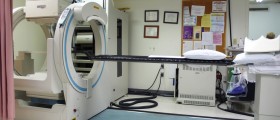
Early cervical cancer usually calls for a hysterectomy. A small number of women suffering from this condition may have a choice of an operation. In patients with very early cervical cancers, it is possible to extract most of the cervix, but still leave enough to enable the patient to get pregnant and have a baby. This procedure is called a radical trachelectomy.
This procedure is aimed at removing the cancer in its entirety without losing the function of the cervix. This leaves a small opening that allows for the flow of a patient’s period. This operation is possible only in patients diagnosed with a small stage one cervical cancer. The success of the procedure is never guaranteed.
The part that has been extracted is examined even as the patient is still in the operating room. If it is determined that all cancer cells have been removed, the rest of the tissue will be left intact. If that is not the case, further extractions will have to be made. A hysterectomy may well prove to be the end solution, after all. This, however, can not be done as part of the same operation unless expressly agreed to by the patient beforehand.
Following the verification of a successful procedure, the surgeon will insert the stitching that should close up the cervix. He will also take samples of lymph nodes to eliminate the possibility of cancer spreading into them. This is done laparoscopically, with 5 small incisions around the lower abdomen. If cancer cells are found in the lymph nodes, it may be proof that the cancer has spread out of the cervix and may reappear elsewhere. The likely suggestion in this case would be to undergo some radiation therapy so as to kill any leftover cancer cells. This treatment will leave the patient infertile.
Radical trachelectomy is a small operation and it does not require any substantial hospitalization. In most cases, the patients recover rather quickly, usually without any complications.
A radical hysterectomy is a procedure aimed at removing the womb altogether. This is a rather big operation which may sometimes be necessary so as to ensure the complete removal of cancerous tissue. Hospitalization ensues and lasts for about a week. Recovery lasts as long as one month or even more. The operation requires that the surgeon removes the womb, the tissue holding the womb in its place, the top of the vagina as well as all the lymph nodes around the womb.
If the patient has gone through menopause, the surgeon will likely suggest the removal of the ovaries as well. It helps eliminating chances of cancer cells remaining in the organism.
If the patient has not had menopause, the removal of the ovaries would put her into a premature one. In this case, the patient will get HRT (hormone replacement therapy) to prevent the effect of menopause on bones and other organs.







_f_280x120.jpg)









Your thoughts on this
Loading...